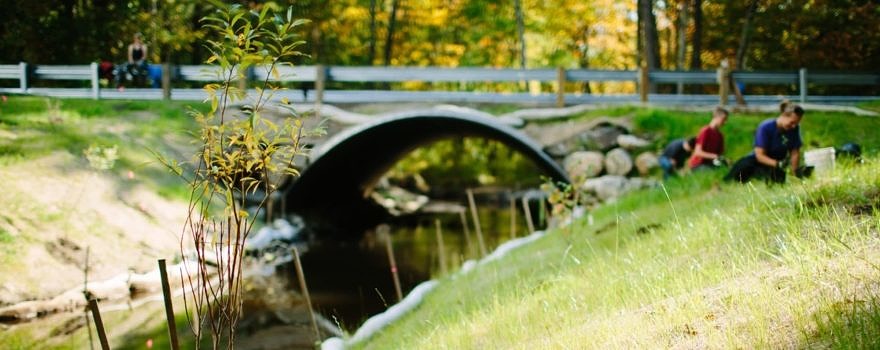Restoring Streams for Fish & For People
Fish need to be able to move up- and downstream to find food, access spawning sites, and seek shelter from predators, high temperatures, or extreme flows.  In many places, this movement is hindered — or blocked entirely — when streams cross beneath roads and through too-small culverts. Undersized culverts are also more vulnerable to blowing out during flood events, which are expected to occur with greater frequency and intensity in the Northeast as a result of climate change.
In many places, this movement is hindered — or blocked entirely — when streams cross beneath roads and through too-small culverts. Undersized culverts are also more vulnerable to blowing out during flood events, which are expected to occur with greater frequency and intensity in the Northeast as a result of climate change.
A Win-Win
Thankfully, what’s good for fish is also good for making our road network more resilient in the face of climate change. Throughout New England, efforts are underway to replace or retrofit undersized culverts with larger crossing structure for both fish passage — with a focus on coldwater fish such as Eastern brook trout — and flood resilience.
Stream Crossing Surveys
In 2006 and 2008, our community scientists surveyed nearly 1,000 culverts and bridges in the Ashuelot River watershed to determine where fish passage is most impacted by roads. In recent years, Harris Center interns and undergraduate researchers have expanded these efforts into the Contoocook watershed, with special focus on road-stream crossings adjacent to Harris Center-conserved lands. These data are used by Trout Unlimited, the Cheshire County Conservation District, New Hampshire Fish and Game, and other partners to prioritize sites for stream restoration.
Reconnecting Falls Brook
In 2015, restoration work began on one of our highest-priority sites; by August 2016, a new, fish-friendly crossing on Hale Hill Road in Swanzey had reconnected more than 20 miles of stream habitat in Falls Brook and the Ashuelot River for wild brook trout and aquatic wildlife!
In 2016, an undersized culvert on Falls Brook at Hale Hill Road in Swanzey, NH was replaced with an open-bottom arch crossing, to improve both fish passage and flood resilience. Here, volunteers plant native, edible plants along the streambanks to help stablize them after construction. (photo © Emily Lord/Nature Groupie)

Contact Us
For more information, please contact Brett Amy Thelen at (603) 358-2065 or by email.


